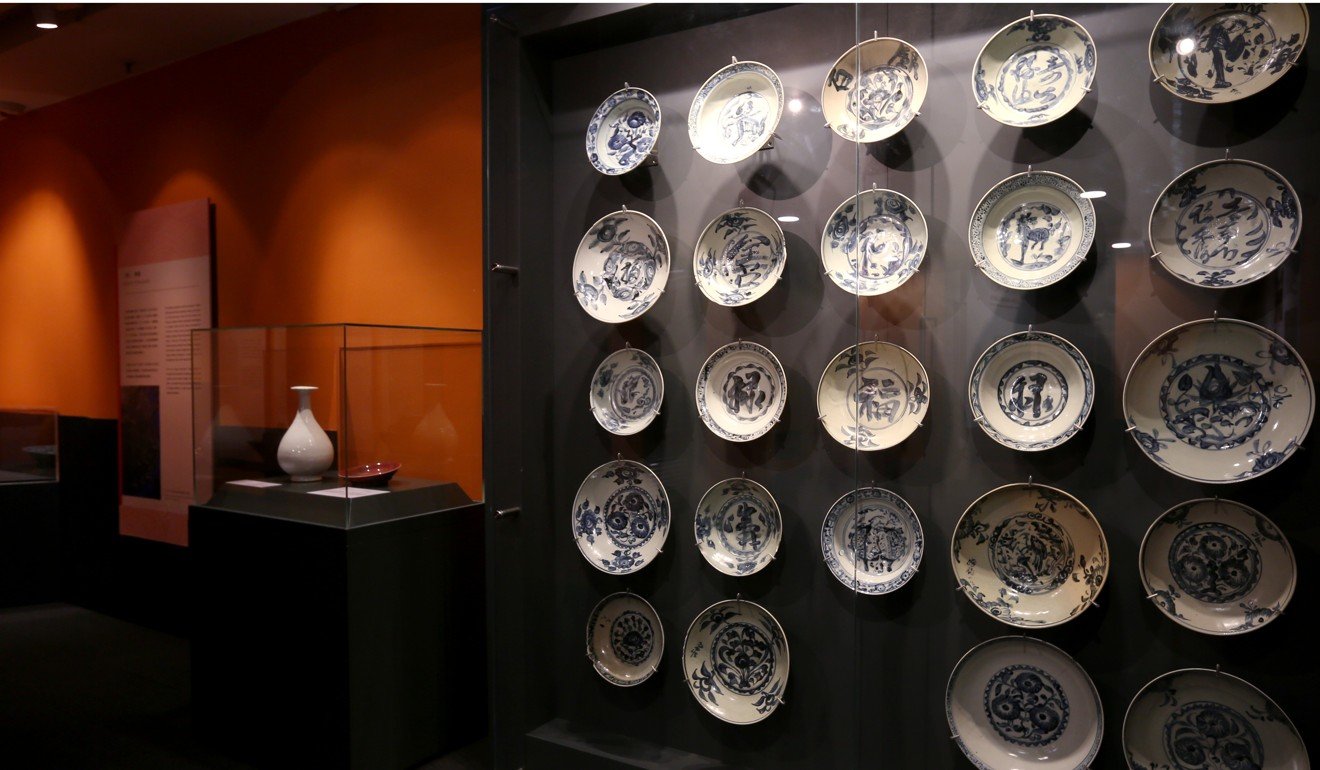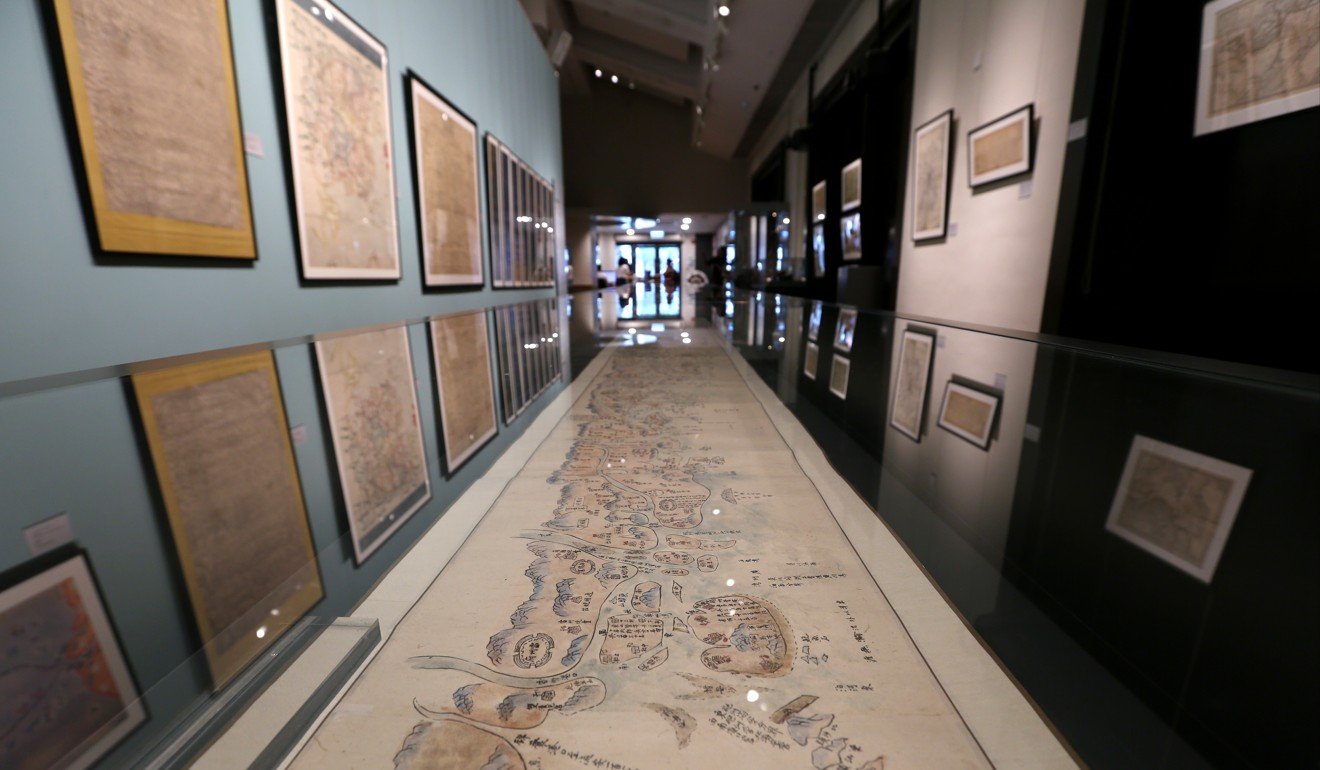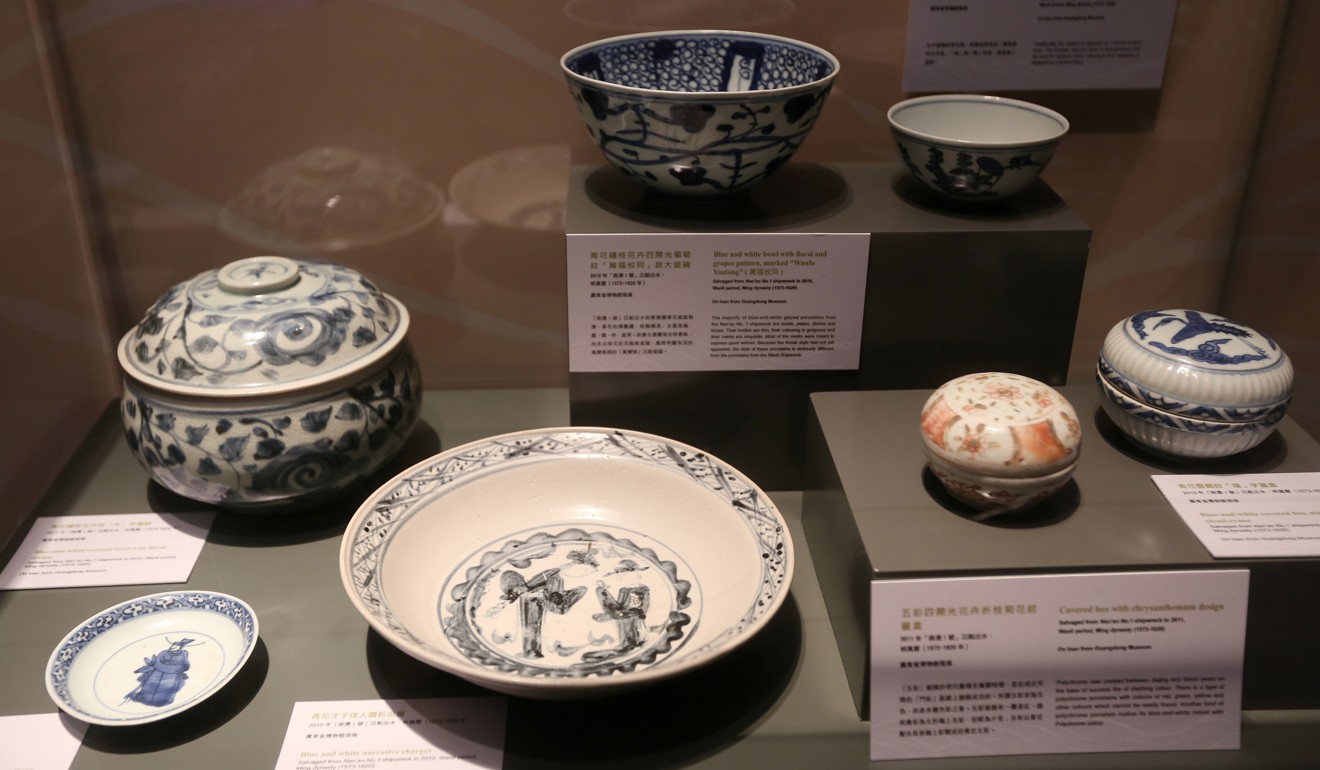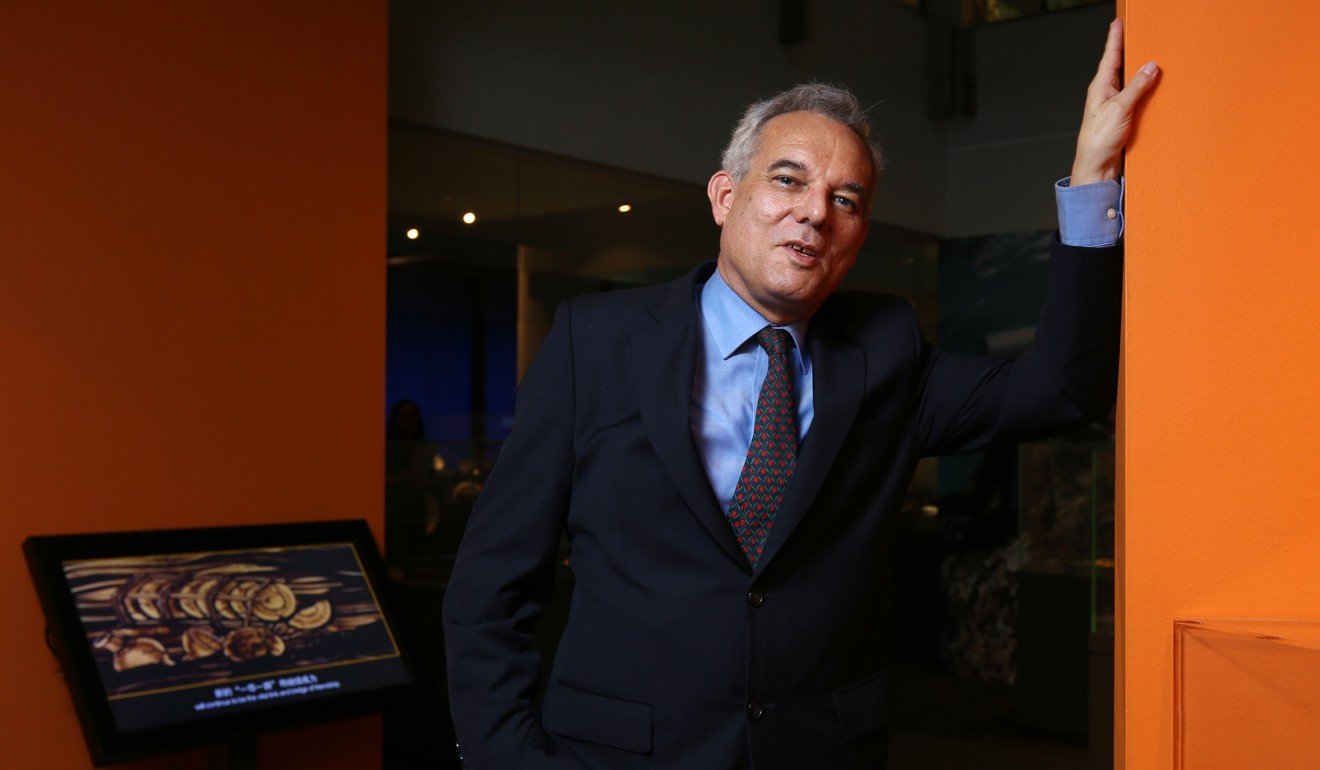
When Hong Kong was a way station on the Maritime Silk Road – new exhibition showcases recent discoveries about city’s trading past
Hong Kong has been slower than some Chinese ports to trumpet its role in the history of East-West maritime trade, but a new exhibition at Hong Kong’s Maritime Museum shows the importance of places such as Tuen Mun and High Island to ancient mariners and is a timely reminder of the broader benefits to society of trade
Hong Kong’s historical place on China’s symbolic Maritime Silk Road is highlighted in a new exhibition at the city’s Maritime Museum.
“We can now prove Song and Ming dynasty Hong Kong had a transitional position on the Maritime Silk Road in places like Tuen Mun, High Island and Penny’s Bay,” says Dr Libby Chan Lai-pik, assistant director of the museum.
3D images give Silk Road’s Dunhuang cave art new life
The exhibition, called “East Meets West: Maritime Silk Routes in the 13th-18th Centuries”, is co-organised by the Guangdong Museum and runs until November 11.
The exhibition’s timing is opportune. Beijing has launched a major publicity blitz to promote the benefits of its Belt and Road Initiative, a development plan to grow global trade, and this involves highlighting the historic silk routes that underpin it.
Following the apparent recent cancellation of three related infrastructure projects in Malaysia by Prime Minister Mahathir Mohamad, and growing criticism that the development initiative is more about Chinese hegemony than bilateral exchanges, the historical context of the programme is more important than ever.
“The Maritime Silk Road is a hot topic and those trading routes and their impact on today is crucial,” Chan says. She adds that while previous related exhibitions at the museum have mentioned Hong Kong, none have attempted to stamp the city firmly on the ancient maritime trading network.

Since autumn 2013, when President Xi Jinping first proposed the Belt and Road Initiative, coastal cities in China have been clamouring to establish their historical place on the Maritime Silk Road.
Authorities in port cities such as Quanzhou, Guangzhou, Xiamen and Ningbo calculate that by establishing their historic credentials, they may gain recognition as key points of the modern-day initiative, and in turn gain a share of the US$60 billion of potential investment and curry favour in Beijing.

Hong Kong has been more reticent. While there is no shortage of enthusiasm among the business elite for the financial benefits of the initiative’s infrastructure and connectivity projects, the historical context that inspired Xi’s grand vision is lacking.
The third Belt and Road Summit, held in Hong Kong this summer, welcomed some 5,000 participants from 55 countries and regions, and included more than 80 government and business leaders from Hong Kong. Few, however, discussed ancient sailing routes or cultural exchange.

Hong Kong does have its own Maritime Silk Road Society, originated by Regina Ip Lau Suk-yee, a member of the Executive Council which advises the Hong Kong administration, and a member of the city’ s Legislative Council. Its website is packed with business initiatives, scholarships and inspiring rhetoric, but there is nothing about the historical context of the Maritime Silk Road or Hong Kong’s place on it.
A Song dynasty stone from the Tin Hau temple at Fat Tong Mun records a visit of an imperial salt officer and his companion, indicating that the salt export business was very important to this area
It has only been possible to place Hong Kong on the Maritime Silk Road as a result of recent archaeological discoveries.
In July 2016, Dr Bill Jeffery, assistant professor of anthropology at the University of Guam and a research associate at Hong Kong Maritime Museum, led a team of volunteer diver-archaeologists from the Hong Kong Underwater Heritage Group to recover a 1,000-year-old stone anchor stock off High Island on the Sai Kung peninsula. It took two years to conserve the stock for display and it takes pride of place at the Maritime Museum exhibition.
“Less than 10 anchors like this one have been discovered from across China,” Chan says.
She explains that the stock is about one-third smaller than the one found with the 15th-century shipwreck Nanhai No. 1, which is now housed in its own purpose-built museum on Hailing Island in Guangdong province and is often compared with the terracotta warriors in terms of archaeological significance.

A lump of old stone may not get visitors’ pulses racing, but the story behind it might.
The anchor stock is from an ocean-going vessel, not a small local boat. It suggests that 1,000 years ago in the Song dynasty (960-1279), ships plying the Maritime Silk Road – at the time at its height – were calling at bays around High Island en route to Guangzhou, the Gulf of Thailand and beyond.
“Ming dynasty records indicate High Island was a sheltered harbour with abundant food and clear water, but we need more evidence to determine its significance as a transit point on the Maritime Silk Road,” Chan says.
The kebab shop at the end of the Maritime Silk Road
High Island was also the location of Hong Kong’s first and only ancient shipwreck. A late Song dynasty or early Ming dynasty (1368-1644) boat was uncovered during construction of the High Island Reservoir in 1974.
Chan explains that the Sai Kung area first appeared in early Ming dynasty records as a port of call for tribute (“kung” in Cantonese) for ships from the West (“sai”), suggesting the presence of foreign ships approaching the larger ports on the southern China coast via what is now Hong Kong.
Salt was the vital local commodity in the Song period, not silk.
“A Song dynasty stone from the Tin Hau temple at Fat Tong Mun [by Hong Kong’s Joss House Bay] records a visit of an imperial salt officer and his companion, indicating that the salt export business was very important to this area,” Chan says.

Sai Kung and the northern New Territories were closely linked to Chinese administrative centres at Shenzhen and the Dapeng peninsula long before any European development of Hong Kong Island.
The exhibition also includes a range of items loaned by Hong Kong’s Antiquities and Monuments Office which were recently excavated from the Sacred Hill North site during work on Sung Wong Toi MTR station. Ancient residential sites and wells were discovered indicating significant settlement during the Song and Yuan dynasties near what is now the area around Kai Tak.
Some of the pottery shards excavated at the Sacred Hill site are from the Cizao Kiln in Jinjiang, Fujian province, and the important Longquan Kiln in Zhejiang province.
We are not overplaying or exaggerating the role of Hong Kong. We are saying that trading vessels used Hong Kong waters for shelter and water before heading west on the Maritime Silk Road
The exhibition suggests that these specialist ceramics were imported by sea and that eastern Hong Kong might have been an important loading station for ceramics for foreign traders on the Maritime Silk Road.
Scholars have long known about the importance of Hong Kong’s western waters as vital approaches to the major trading city of Guangzhou. Penny’s Bay, in southern Lantau Island, was excavated in 2010 as part of the new Disneyland development, and revealed two mass pits of Ming dynasty ceramics.
Tuen Mun in Hong Kong’s western New Territories was also an important sentinel for the port of Guangzhou to the north.
Writings from the 12th century indicate that Castle Peak in Tuen Mun (also known as Sheng Shan and Pui To Shan) was an important navigation mark for mariners exiting Guangzhou and heading southeast because of its distinctive shape.
The Tuen Mun garrison, established in the 24th year of Emperor Xuanzong’s reign in the Tang dynasty (AD736), was later an important naval base during the Ming dynasty. Sadly, what was historic Castle Peak Bay now lies under several metres of concrete, following extensive reclamation in the area.
Lord of Formosa: tale of Ming pirate who won Taiwan from Dutch
With the advent of a trade war between the United States and China, the 200 items on display are also a timely reminder of the broader benefits to society of trade.
Traders from Persia, Oman, Sri Lanka, Thailand, Europe and elsewhere visited Chinese ports such as Guangzhou, Quanzhou and Ningbo. They brought with them their art, music, religion and customs. It made southern Chinese ports on the Maritime Silk Road wealthy, tolerant and cosmopolitan entrepots.
“The idea is that China gained financially and culturally from the maritime silk routes and it helped develop a number of cities along the China coast,” says museum director Richard Wesley.

By putting Hong Kong on the same map as these ancient trading cities, the exhibition also emphasises the shared maritime and cultural links between Hong Kong and China, long before it became a British colony in the 19th century. This is something Beijing would no doubt welcome.
Wesley fiercely rejects the suggestion that pressure might have been exerted to stage an exhibition cementing Hong Kong’s historical place within a key Chinese foreign policy programme at such a critical time.
“We are a non-political and independent museum so we don’t take instructions from anyone,” he says.
“We are not overplaying or exaggerating the role of Hong Kong. We are saying that trading vessels used Hong Kong waters for shelter and water before heading west on the Maritime Silk Road.”
Five concubines whose exploits changed China’s history
Poring over an early Qing dynasty Chinese scroll chart of the Guangdong area, which clearly shows ports around High Island, Chan concedes that much more work is needed to establish the importance of eastern Hong Kong as a node on the extensive network that dominated trade and culture in the region for some five centuries.
“We need more work in marine and land archaeology because there is no written history. This is silent history concealed under the sea and under the ground,” she says.
“It could tell us so many more stories about Hong Kong one thousand years ago.”

